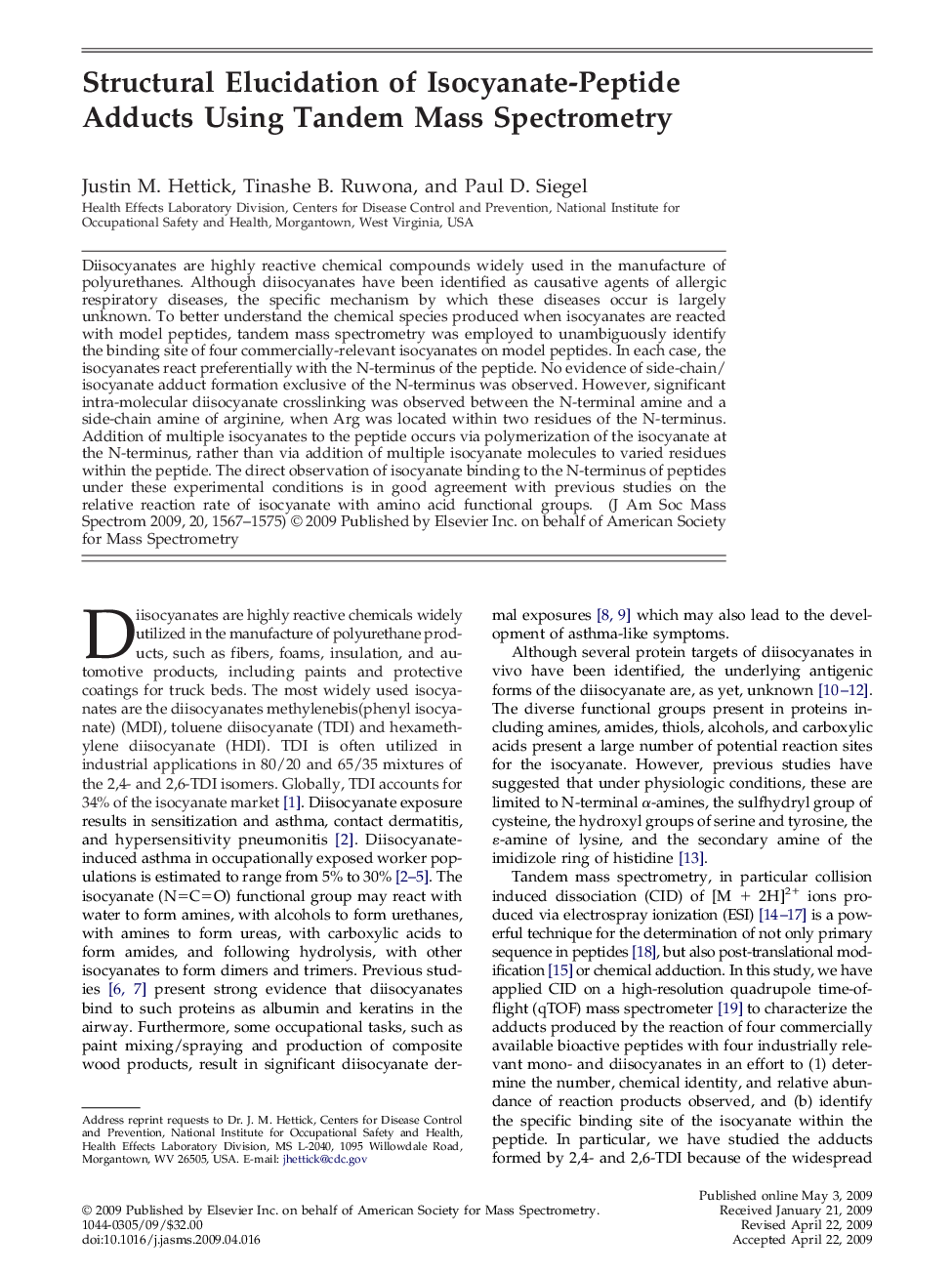| کد مقاله | کد نشریه | سال انتشار | مقاله انگلیسی | نسخه تمام متن |
|---|---|---|---|---|
| 1195232 | 964297 | 2009 | 9 صفحه PDF | دانلود رایگان |

Diisocyanates are highly reactive chemical compounds widely used in the manufacture of polyurethanes. Although diisocyanates have been identified as causative agents of allergic respiratory diseases, the specific mechanism by which these diseases occur is largely unknown. To better understand the chemical species produced when isocyanates are reacted with model peptides, tandem mass spectrometry was employed to unambiguously identify the binding site of four commercially-relevant isocyanates on model peptides. In each case, the isocyanates react preferentially with the N-terminus of the peptide. No evidence of side-chain/isocyanate adduct formation exclusive of the N-terminus was observed. However, significant intra-molecular diisocyanate crosslinking was observed between the N-terminal amine and a side-chain amine of arginine, when Arg was located within two residues of the N-terminus. Addition of multiple isocyanates to the peptide occurs via polymerization of the isocyanate at the N-terminus, rather than via addition of multiple isocyanate molecules to varied residues within the peptide. The direct observation of isocyanate binding to the N-terminus of peptides under these experimental conditions is in good agreement with previous studies on the relative reaction rate of isocyanate with amino acid functional groups.
Graphical AbstractDiisocyanates are highly reactive chemicals responsible for occupational disease. Binding sites of toluene diisocyanates on model peptides are determined from collision induced dissociation data.Figure optionsDownload high-quality image (170 K)Download as PowerPoint slide
Journal: Journal of the American Society for Mass Spectrometry - Volume 20, Issue 8, August 2009, Pages 1567–1575